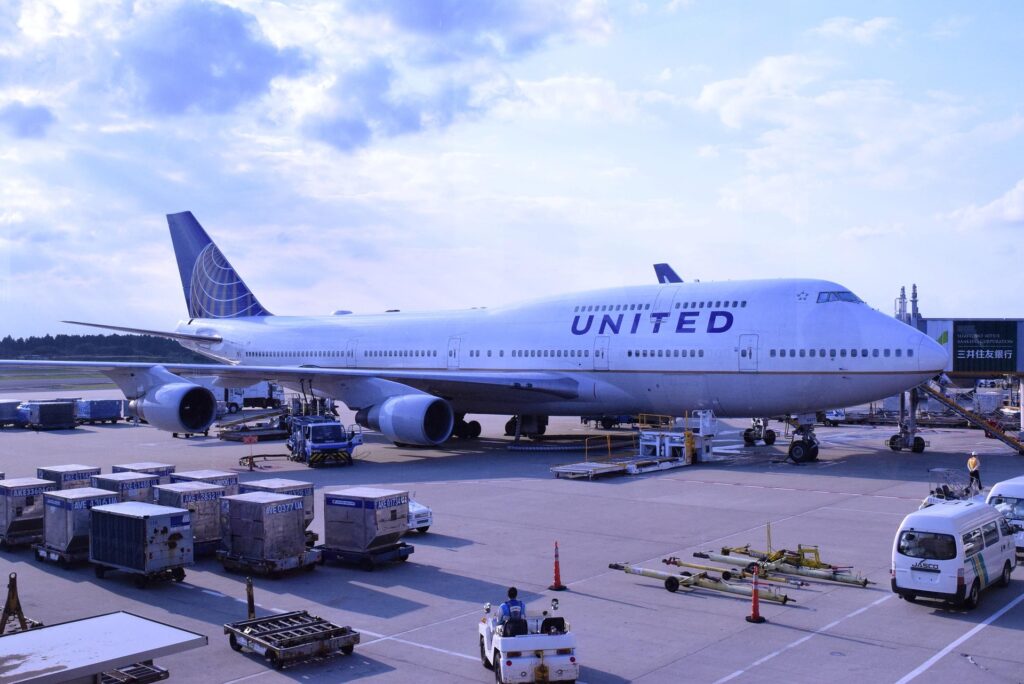
The mind races if you’ve ever been on an airplane and heard something change all of a sudden, like the engines sounding different, the seatbelt sign chiming, or the crew moving more urgently. That is precisely what happened to passengers on United Airlines Flight UA770 Emergency Diversion when an unplanned diversion was caused by a mid-air emergency.
Although I wasn’t on that particular flight, I can imagine the knot in the stomach, the glances that are exchanged, and the deep breath that is taken when the captain’s voice interrupts because I spend a lot of time in the air. These kinds of incidents serve as a reminder of how much we rely on pilots, technology, and the invisible web that ensures the safe operation of contemporary aviation.
Let’s go over what actually transpired that day, starting in the cabin and moving to the control tower, cockpit, and runway.
What Passengers Saw and Felt in the Cabin
UA770 passengers were settled in for the lengthy journey from Barcelona to Chicago at one point. Then the captain, calm and steady, came on the speaker and explained that the plane had to divert for safety.
I can picture the silence that must have descended. The click of seatbelts being fastened was probably audible. There were nervous smiles, hushed “what’s happening?” exchanges, and that distinct quiet of people attempting to maintain composure.
However, the flight attendants were fully aware of what to do. They moved swiftly but composedly, and their presence was nearly as comforting as the Captain’s words. In those situations, human comfort is more important for safety than oxygen masks and exit lines.
Behind the Cockpit Door: Squawk 7700
Inside the cockpit, things were moving at lightning speed. The pilots declared a “squawk 7700”—aviation’s universal distress code that immediately tells air traffic control, this flight needs priority handling now.
Now, here’s something worth knowing: squawk 7700 doesn’t always mean disaster. Sometimes it’s a medical issue, sometimes a technical concern. A retired pilot once explained it to me like this:
“Declaring an emergency isn’t saying the plane’s going down—it’s saying we’re clearing the chessboard so we can make the safest move.”
That’s exactly what the crew of UA770 did—making choices with safety, not panic, as their guide.
Air Traffic Control: Clearing the Skies
Imagine the skies over Europe as a traffic-lightless freeway during rush hour. Air traffic controllers (ATC) acted quickly after UA770 declared an emergency.
By coordinating a new flight path, controllers created a safe path toward London Heathrow while avoiding other aircraft. On their radar screens, you can imagine the flurry of adjustments—rerouting other jets, spacing altitudes, and creating a clear landing corridor.
It’s invisible to most passengers, but ATC is the quiet safety net of aviation, and in situations like this, they’re the unsung heroes.
On the Ground: Heathrow Ready and Waiting
By the time UA770 approached London, Heathrow Airport was already in full emergency-prep mode. Fire trucks lined the runway. Medical crews were on standby. Emergency staff were ready—because in aviation, precaution is everything.
When the wheels finally touched down, passengers described it as surprisingly smooth. What could have been a terrifying landing turned into one of relief, thanks to steady piloting and flawless coordination.
Passenger Reactions: Gratitude After the Storm
After landing, the emotions spilled out.Some travelers thanked the crew on social media. Others acknowledged experiencing terrifying moments they would never forget. Others simply dismissed it as one of those strange travel tales that they would continue to tell over and over at dinner parties for years to come.
I can imagine getting off that plane myself, a little unsteady on my knees but feeling a wave of appreciation for the pilots, the crew, and the system that performed flawlessly.
What Happens After an Emergency Diversion?
For the airline, the story doesn’t end at landing. Mechanics checked the aircraft. Operations teams scrambled to rebook passengers. Travel plans were disrupted, but customer service representatives worked to make things better.
Although it’s easy to forget, aviation safety involves more than just flying; it also involves providing for people after an accident to ensure that nobody is left stranded.
The Bigger Picture: Why UA770 Matters
The United Airlines Flight UA770 emergency diversion wasn’t just an isolated incident. It was a real-world showcase of aviation safety in motion:
- Pilots making fast, clear-headed decisions.
- ATC giving priority in crowded skies.
- Airport crews mobilizing in minutes.
It’s a reminder that flying remains one of the safest ways to travel—not because emergencies never happen, but because when they do, the system is built to protect lives first.
A Traveler’s Takeaway: Staying Calm in the Air
Emergencies at 37,000 feet are rare, but a little preparation goes a long way:
- Pay attention to safety briefings (yes, even if you fly often).
- Keep essentials handy—medications, chargers, ID.
- Stay calm. Remember, “emergency” in aviation usually means precaution, not catastrophe.
Final Thoughts
The emergency diversion of United Airlines Flight UA770 may have caused some anxious moments, but it also highlighted the strength of modern aviation. All of the protective layers—pilots, controllers, and ground crews—clicked into position precisely as they should have.
UA770 is more than just a tale of a flight that had to be diverted, in my opinion. It’s a tale of comfort. Concerning trust. About how a system and a group of people are prepared to ensure that everyone lands safely, even in the infrequent instances when things don’t go as planned.

